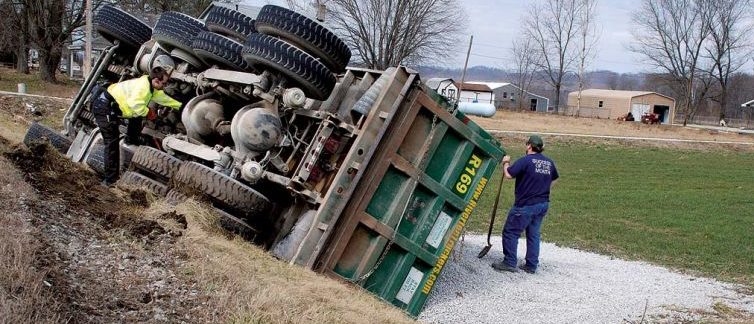Keeping your dump truck safe while hauling heavy loads is essential. That’s where the WINK Anti-Tip device comes in—preventing dangerous tipping accidents by automatically stabilizing your truck. But, like any piece of equipment, it needs proper care to stay effective.
In this guide, I’ll walk you through everything you need to know to maintain your WINK Anti-Tip device. We’ll cover routine checks, cleaning, servicing, and troubleshooting tips. By mastering these, you’ll ensure your device works perfectly and lasts longer.
Proper maintenance isn’t just about efficiency—it’s about safety and saving money on unnecessary repairs. Ready to keep your WINK Anti-Tip device in top condition? Let’s dive in!
Understanding the Components of the WINK Anti-Tip Device
The WINK Anti-Tip device has several key components working together to keep your dump truck stable. Knowing these parts helps you maintain them properly.
First, there’s the main control unit—the brain of the device. It processes data from the sensors and decides when to activate the lowering mechanism. Next, we have the sensors strategically placed around the truck to monitor its tilt and balance, providing real-time data to the control unit.
Then, there’s the hydraulic system responsible for lowering the stabilizing unit when a tipping risk is detected. It needs to be in top shape to respond quickly. Lastly, the mounting brackets and hardware keep everything securely attached to your truck. Regular checks ensure they stay tight and damage-free.
Understanding these components helps you see how the WINK Anti-Tip device keeps you safe.
Routine Checks to Ensure Optimal Performance
Regular routine checks keep your WINK Anti-Tip device in top shape, catching potential issues before they become serious problems.
Start by inspecting the control unit for wear and tear, ensuring all connections are secure. Next, check the sensors—they should be clean and free of debris that could affect their readings. Gently clean dirty sensors with a soft cloth to maintain accuracy.
Then, inspect the hydraulic system. Look for leaks in the hoses and ensure fluid levels are adequate. Low fluid levels can slow the system’s response in an emergency. Finally, check the mounting brackets and hardware. They should be tight and free from rust or corrosion. Loose or damaged hardware can compromise the whole system.
Performing these routine checks ensures your WINK Anti-Tip device is always ready to enhance your truck’s safety.
Step-by-Step Guide to Cleaning and Servicing the Device
To keep your WINK Anti-Tip device performing well, regular cleaning and servicing are key. Here’s a straightforward guide:
- Turn Off the Device: Before starting, turn off the device to prevent accidental activations.
- Clean the Sensors: Wipe the sensors gently with a soft cloth. Avoid harsh chemicals. Use a small brush for stubborn dirt without scratching the sensors.
- Inspect the Hydraulic System: Check for leaks or damaged hoses. Tighten fittings or replace damaged parts. Ensure hydraulic fluid levels are adequate. Top off with recommended fluid if low.
- Check the Control Unit: Inspect the wiring for loose connections or wear. Secure loose wires and replace frayed ones.
- Lubricate Moving Parts: Apply suitable lubricant to hydraulic system’s moving parts for smooth operation. Follow the manufacturer’s guidelines.
- Reassemble and Test: After cleaning and inspecting, reassemble the components and turn the device back on. Test it in a controlled environment to ensure it’s working correctly.
Following these steps keeps your WINK Anti-Tip device in optimal condition, ready to ensure your truck’s safety.
Common Issues and How to Troubleshoot Them
Even with routine maintenance, you might face some common issues with your WINK Anti-Tip device. Here’s how to troubleshoot them:
- False Alarms: Dirty sensors could cause false alarms. Clean them as described in the cleaning guide. If the problem persists, recalibrate the sensors according to the user manual.
- Slow Activation: If the hydraulic unit is slow, check fluid levels and look for leaks in the system. Low fluid or air in the hydraulic lines can cause delays. Bleed the lines and top off the fluid as necessary.
- No Response: If the device doesn’t respond, start by checking the power supply. Ensure it’s properly connected and receiving power. Check fuses and replace any that are blown. Inspect wiring for loose or damaged connections.
- Error Messages: If the control unit displays error messages, consult the user manual for the specific error code. Often, a simple reset can resolve minor issues.
By addressing these common problems, you can keep your WINK Anti-Tip device working efficiently, ensuring your truck’s safety and stability.
Final Thoughts
Maintaining your WINK Anti-Tip device is crucial for your dump truck’s safety and stability. By understanding its components, performing routine checks, and following a systematic cleaning and servicing schedule, you ensure it stays in optimal condition. Proactive maintenance not only extends the device’s life but also ensures it works when you need it most.
Addressing issues promptly prevents small problems from becoming major ones. By taking these steps, you invest in the long-term safety and reliability of your truck’s operations.
To learn more about how to keep your Wink Anti-Tip device in top shape, reach out to us today. Don’t wait—enhance your truck’s safety today with our expert guidance and products!


